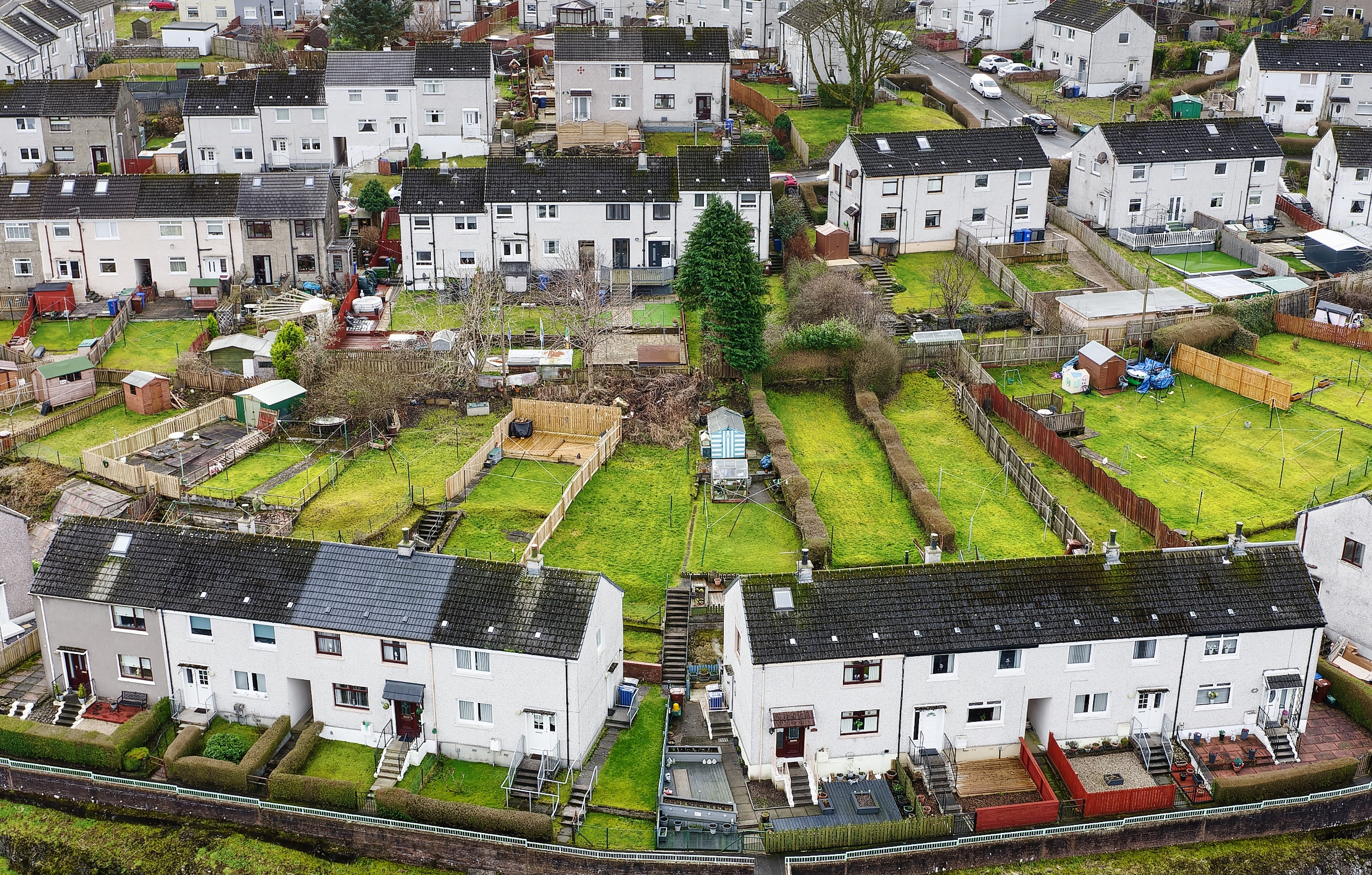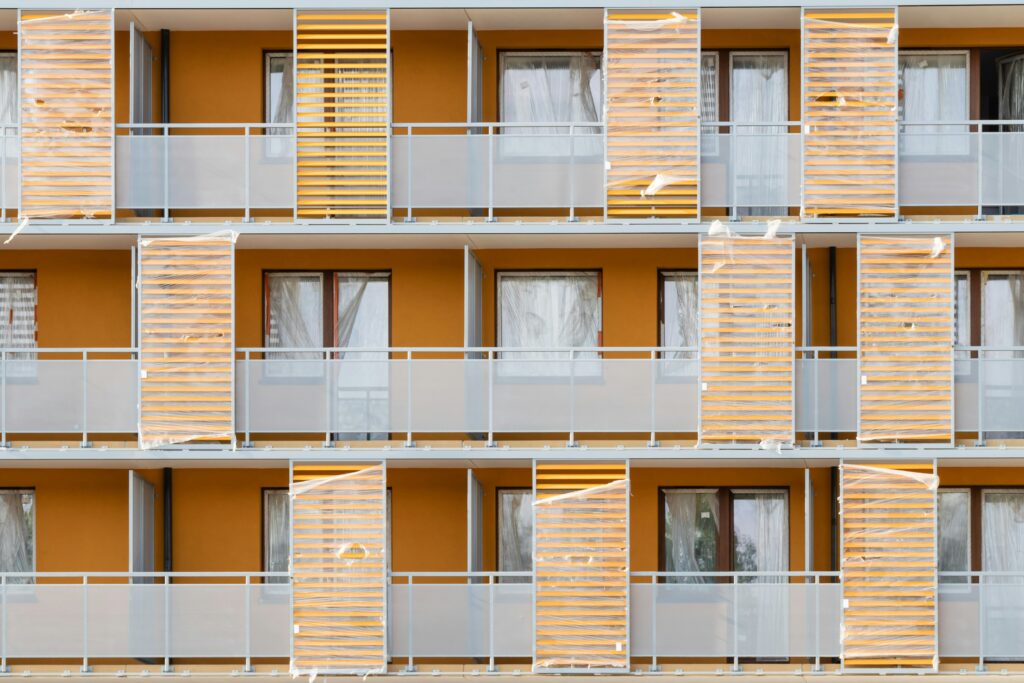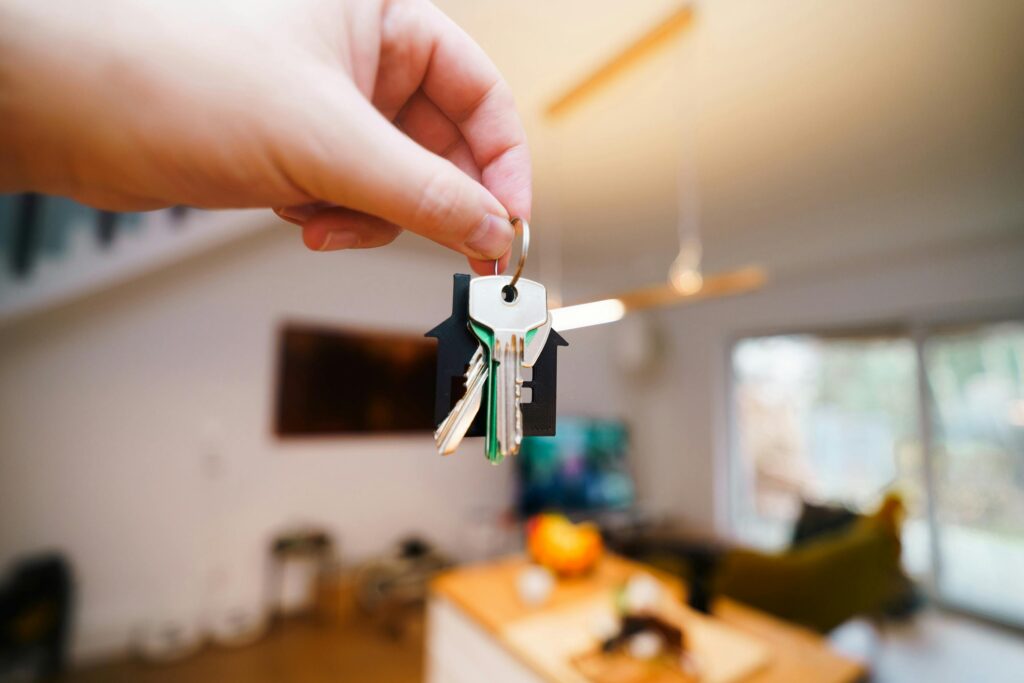What is BISF House Construction?

Estimated reading time 9 minutes
You will have walked past a BISF house, but you may not have looked twice. These properties were the solution to the housing shortage following World War II and many people still call them home today. This non-standard form of construction isn’t popular today, but there are pros and cons to owning a BISF house which will be discussed in this guide.
What is a BISF house?
BISF refers to the construction method used to build post-war houses. The abbreviation stands for British Iron and Steel Federation, the organization that designed them.
Unlike traditional brick houses, BISF houses are constructed with a steel frame. The walls would be produced in factories and delivered as large panels. The materials used included concrete or asbestos cladding with an inner layer of hardboard or fibreboard. The panels would be slotted into the steel frame, allowing for a quick build process.
Unlike true prefabricated houses where entire sections arrive ready-made, BISF houses use prefabricated panels for walls. These panels were constructed in factories with materials like concrete or asbestos cladding, insulation, and an inner layer (often hardboard or fibreboard). The roof was typically constructed using traditional methods with timber and tiles or sheets. Internal walls were built using timber studding and then clad with plasterboard or the prefabricated panels used for the exterior.
Are pre-fab homes and BISF homes the same?
Both BISF houses and many pre-fab homes are built with a focus on speed and efficiency. They use prefabricated components that can be quickly assembled on-site, with elements of both being made in factories.
Pre-fab homes encompass a much broader category. They can be made from various materials and come in many designs. Some pre-fab homes might be built entirely in sections in a factory and delivered whole, while others use prefabricated components like walls or trusses but still require more on-site construction. Furthermore, BISF houses were primarily built in the mid-20th century, while pre-fab homes continue to be an evolving construction method used today.
Simply, all BISF houses are pre-fab homes, but not all pre-fab homes are BISF houses.
Are BISF houses still built today?
Whilst the pre-fab construction method has evolved and is still used today, BISF construction ceased sometime in the late 1940s to early 1950s. BISF houses are no longer built because:
Fulfilled their purpose: The initial goal of BISF houses was to quickly provide a large number of affordable homes. Once the initial housing shortage was addressed, there was less need for this specific type of construction.
Development of new methods: Construction techniques and materials have evolved since the 1940s. More efficient and potentially more cost-effective methods have been developed for building houses.
Limitations of BISF houses: BISF houses have some drawbacks, such as potential asbestos concerns and limitations in insulation compared to modern standards. These factors may make them less desirable than newer construction methods.
While BISF houses are no longer built, there are still many existing in the UK. These houses can be perfectly suitable for living, but it's important to be aware of their unique construction and potential maintenance considerations before purchasing one.
Can you get a mortgage on a BISF house?
Getting a mortgage on a BISF house can be trickier than with a traditionally built house, but it's not impossible.
Mortgage challenges of BISF houses
- Lenders typically prefer properties built with traditional methods like brick and mortar. BISF houses, with their steel frame construction, are considered "non-standard" which can raise some red flags for lenders.
- Some BISF houses, especially older ones, may have concerns like asbestos in the wall panels or limitations in insulation. These factors can make lenders hesitant as they might affect the value or resale potential of the property.
- Valuers who aren't familiar with BISF houses might not be able to accurately assess the property's value, which can hinder the mortgage application process.
How to increase your chances of securing a mortgage for a BISF house
- There are specialist lenders who have experience with non-standard properties like BISF houses. Using a mortgage broker who specializes in such cases can help you find lenders comfortable with BISF construction.
- Getting a thorough survey by a surveyor experienced with BISF houses is crucial. This will highlight any potential issues and assure the lender of the property's condition.
- A larger down payment shows the lender you're financially committed and reduces the risk for them.
- A BISF house that has been well-maintained and has undergone any necessary renovations to address potential issues (like asbestos removal or insulation upgrades) will be more attractive to lenders.
While getting a mortgage on a BISF house requires extra effort, it's achievable. By being aware of the challenges and taking steps to mitigate them, you can increase your chances of securing financing for your BISF property.
The pros and cons of buying a BISF house
BISF houses offer a unique option for potential home buyers. Below is a breakdown of the pros and cons to help you decide if a BISF property is right for you.
Pros
Affordability: BISF houses are generally cheaper than traditionally built brick houses. This can be a major advantage for first-time buyers or those on a budget.
Good rental yields: For investors, BISF houses can offer attractive rental yields due to their lower purchase price.
Location: BISF houses were often built in convenient locations near city centres or industrial areas, which can be desirable for some buyers.
Cons:
Financing difficulties: Obtaining a mortgage on a BISF house can be challenging due to their non-standard construction and potential for issues like asbestos.
Higher running costs: BISF houses may have poorer insulation compared to modern houses, leading to higher heating bills.
Potential asbestos concerns: Asbestos was used in some BISF house wall panels, which can be a health hazard and require careful handling or removal during renovations.
Limited insurability: BISF houses might be more expensive or difficult to insure due to being considered non-standard by insurers.
Additional considerations
Maintenance: Depending on the condition and age of the BISF house, there could be specific maintenance needs related to the steel frame or potential asbestos concerns.
Surveys: A thorough survey by a professional experienced with BISF houses is highly recommended before purchasing one.
Ultimately, deciding on a BISF property depends on your individual priorities and risk tolerance. If affordability and location are your top concerns, a BISF house might be a viable option, but be prepared for the potential challenges in financing, maintenance, and resale.
Is it hard to sell a BISF house?
Selling a BISF house can be more challenging compared to a traditionally built house, but it's not impossible. There are also solutions available beyond selling via a traditional estate agent that can be more favourable for homeowners.
Factors that make selling a BISF property difficult include:
Limited buyer pool: Many potential buyers might be unfamiliar with BISF houses or have negative preconceptions about pre-fabricated homes.
Financing hurdles: As mentioned earlier, getting a mortgage for a BISF house can be difficult, which can limit the number of interested buyers who are qualified.
Potential issues: Concerns like asbestos, outdated insulation, or a non-standard build can make some buyers wary and potentially affect the perceived value of the property.
Choosing an estate agent experienced with BISF houses who can effectively market the property and address buyer concerns is a great way to mitigate any delay on a sale. This is where Bettermove can help. We have a unique approach to property sales; we can buy the house from you ourselves or find you a buyer. We have an extensive network of cash house buyers ready to take on your property regardless of its type and condition. It’s simply a case of matching you with the most appropriate buyer.
One of our dedicated property experts will discuss your property BISF with you, including the price you’d like to achieve and timeline requirements. This allows us to put a strategy in place for you. We’ll provide a realistic cash offer on day one and this will not change, nor will your expert point of contact.
Sound like the perfect way to sell your house fast? It all starts with contacting us today.
BISF House FAQs
We know you might have more questions relating to BISF houses, particularly if you’re considering buying or selling one. Below we have put together some of the most frequently asked questions to help you.
Repair certificates are generally not needed for BISF houses. These houses are not considered defective and don't fall under the category requiring government-approved repairs with certificates, unlike some other non-traditional constructions. The focus when buying a BISF house should be on its overall condition, not a specific BISF repair certificate.
Early BISF houses often have poor insulation compared to modern standards. The thin insulation can struggle to retain heat, leading to chilly interiors. Furthermore, Steel conducts heat more readily than traditional brick walls, so heat loss can be more significant in BISF houses. However, with many homeowners renovating BISF houses, this is not such an issue with the majority of properties.
Yes, extensions can be done on BISF houses. They are a type of construction that can be adapted for additional space quite easily and there are companies who specialise in BISF extensions and renovations.
Yes, BISF houses likely have a damp course. They were built with foundations similar to traditional houses, and a damp course is a standard element in foundation construction to prevent moisture from rising into the walls.
BISF house insurance might be more expensive than brick house insurance. Because BISF houses are considered non-standard construction, some insurers may charge more or be hesitant to insure them altogether.
Due to potential fire safety concerns and the need for a complex flue system installation in a BISF house, open wood-burning fireplaces are generally not recommended. Electric fireplaces are a safe and easy option for BISF houses as they don’t require a flue or major modifications. If you have a gas line installed and a qualified professional handles the installation, a gas fireplace can be a good choice. However, a flue might still be required.



